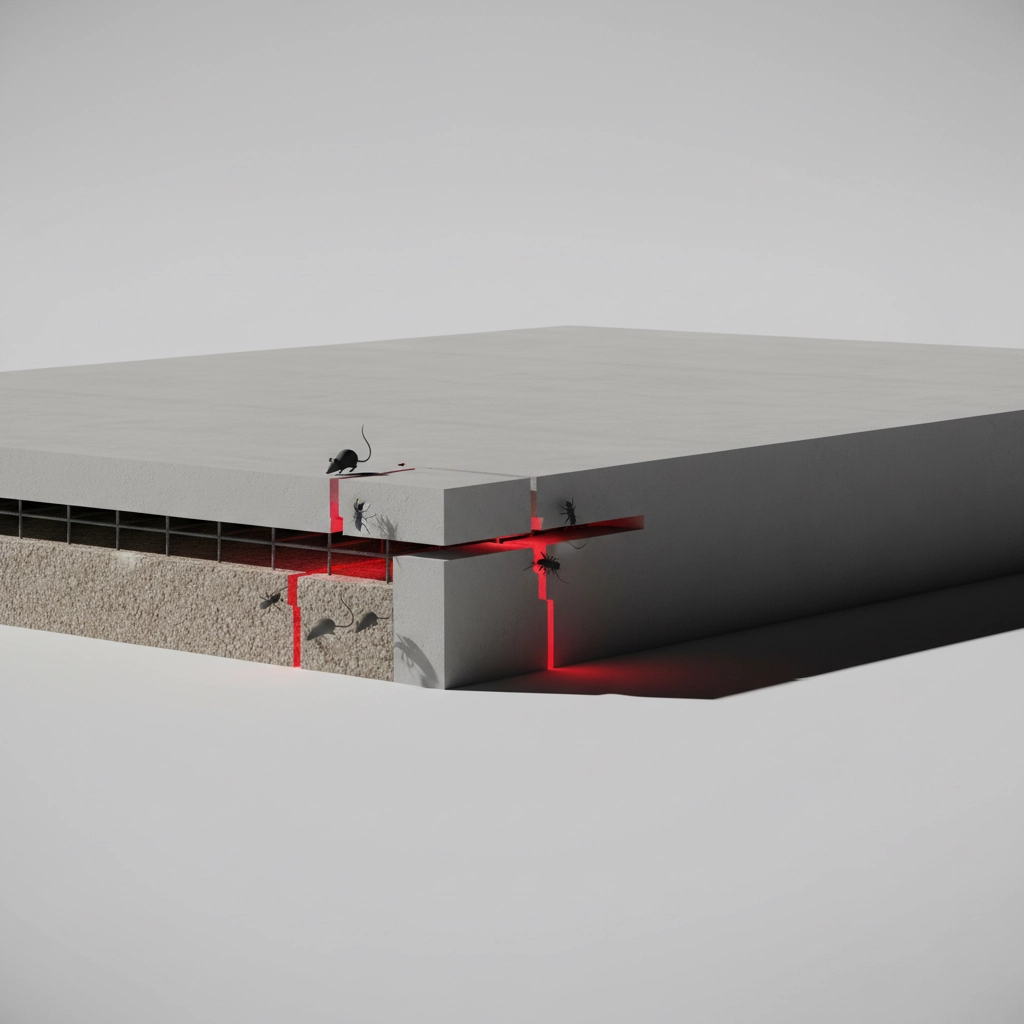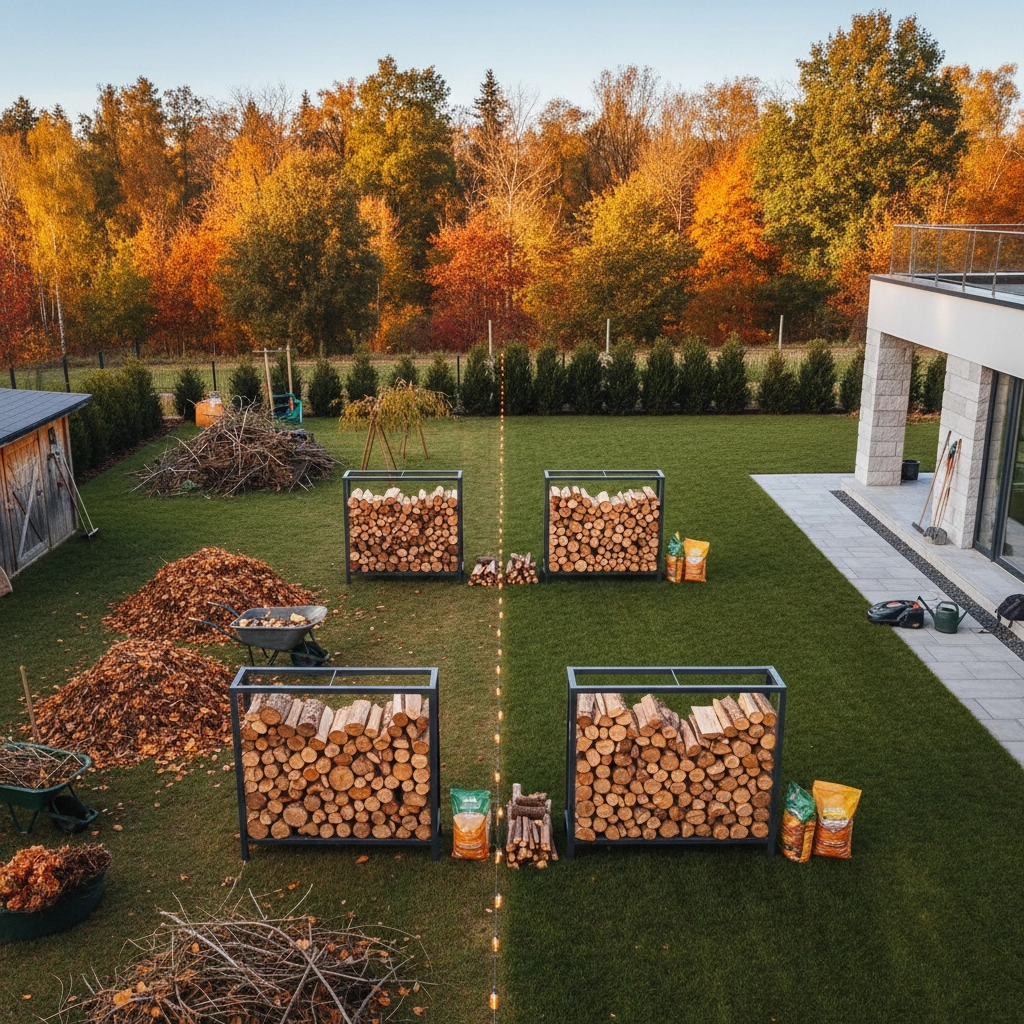7 Mistakes Youre Making with Fall Pest Prevention (and How to Fix Them Before Winter)
- Targeted Wildlife and Pest Solutions

- Sep 28
- 5 min read
Updated: Oct 2
Fall is the critical time for pest prevention, yet many Haliburton property owners unknowingly make costly mistakes that lead to winter infestations. These errors can result in thousands of dollars in damage and months of frustration dealing with unwanted guests. Understanding these common pitfalls and implementing proven solutions will protect your home throughout the colder months.
Mistake #1: Waiting Too Long to Apply Pest Treatments
Most homeowners wait until they spot pests or temperatures plummet before taking action. This reactive approach often means treatments are applied when pests have already established themselves in and around your property. Mice, spiders, and other overwintering pests don't wait for freezing temperatures: they begin seeking shelter as soon as nighttime temperatures consistently drop below 15°C.
The Fix: Start your prevention strategy in late August. Apply barrier treatments around foundations, windows, doorways, and other entry points before pests begin their search for winter shelter. Reapply perimeter treatments throughout September and early October, adjusting frequency based on weather conditions and product specifications.
Focus on timing your treatments during the pest migration window: typically mid-August through mid-October in the Haliburton region. This proactive approach intercepts pests before they establish themselves, making control efforts significantly more effective.

Mistake #2: Failing to Seal Entry Points Properly
Even microscopic gaps can provide access for determined pests. Many property owners underestimate how small an opening needs to be: mice can squeeze through gaps as narrow as 6mm, while insects require even smaller spaces. Common overlooked entry points include foundation cracks, utility penetrations, worn door sweeps, and damaged window screens.
The Fix: Conduct a thorough exterior inspection using a flashlight during daylight hours. Pay special attention to areas where different building materials meet, such as foundation-to-siding joints and around pipe penetrations.
Use appropriate materials for sealing:
Silicone-based caulk for small cracks and gaps
Steel wool or copper mesh for larger openings around utilities
Expanding foam for interior gaps (avoid using outdoors as it degrades)
Weather stripping for doors and windows
Focus on areas below ground level first, as these provide the most direct access to your home's interior. Seal gaps progressively working upward, ensuring no potential entry point is overlooked.
Mistake #3: Leaving Yard Debris and Clutter Near Your Home
Leaf piles, dense mulch layers, and improperly stored firewood create perfect overwintering habitat for pests. Many insects and small mammals use these debris piles as launching points to access your home's warm interior spaces.
The Fix: Maintain a 1.5-meter clearance zone around your home's foundation. Remove fallen leaves, excess mulch, and organic debris that accumulates against exterior walls. Store firewood at least 6 meters from your home and elevate it 15cm off the ground using proper racks.
Trim vegetation so branches don't touch your roof or siding. Overhanging branches provide highways for squirrels, ants, and other pests to access your home directly. Keep grass short and eliminate dense ground cover near foundations where rodents might shelter.
Clean out window wells and basement exterior areas where leaves and debris naturally accumulate. These below-grade areas often provide direct access routes to your home's interior.

Mistake #4: Not Identifying Root Causes
Quick fixes like spot treatments or individual traps address symptoms without solving underlying problems. This approach provides temporary relief but fails to eliminate the conditions attracting pests to your property.
The Fix: Before implementing any control measures, conduct a thorough assessment to identify attractants. Ask yourself these key questions:
What food sources are available to pests?
Where is moisture accumulating around your property?
What shelter opportunities exist?
How are pests accessing these resources?
Document your findings and address each attractant systematically. Remove food sources by securing garbage, cleaning up fallen fruit, and eliminating standing water. Reduce shelter opportunities by clearing debris and maintaining landscaping. Block access routes through proper sealing and exclusion work.
This methodical approach ensures your prevention efforts target actual problem sources rather than just visible pest activity.
Mistake #5: Neglecting Interior Organization and Food Storage
While exterior prevention gets most attention, interior conditions often determine whether pests establish permanent populations. Cluttered storage areas, improperly sealed food containers, and poor sanitation practices create ideal pest habitat inside your home.
The Fix: Organize storage areas using pest-resistant containers. Replace cardboard boxes with sealed plastic bins, especially in basements, attics, and garages where pests commonly enter. Store pet food, birdseed, and other attractants in metal or heavy plastic containers with tight-fitting lids.
Implement regular cleaning schedules that address areas where food debris accumulates:
Vacuum under appliances monthly
Clean behind stored items quarterly
Wipe down pantry shelves and containers regularly
Address spills immediately
Reduce clutter that provides hiding places for pests. Organized spaces make it easier to spot early signs of pest activity and implement targeted control measures when necessary.

Mistake #6: Ignoring Exterior Cleaning and Maintenance
Dirty exterior surfaces, clogged gutters, and accumulated organic matter create conditions that attract and support pest populations. Many property owners focus on interior cleanliness while neglecting exterior maintenance that directly impacts pest pressure.
The Fix: Establish seasonal exterior cleaning routines. Clean gutters and downspouts to prevent water accumulation that attracts mosquitoes and provides drinking sources for other pests. Remove organic debris from exterior surfaces where it can decompose and attract insects.
Pressure wash decks, patios, and exterior walls annually to remove food residues and organic buildup. Pay special attention to areas around outdoor cooking and dining spaces where food particles accumulate.
Maintain proper drainage around your foundation. Standing water attracts pests and can lead to moisture problems that create ideal conditions for insects and other unwanted guests. Ensure downspouts direct water at least 2 meters away from your foundation.
Mistake #7: Improper Pesticide Use and Product Selection
DIY pest control often involves using wrong products, incorrect application rates, or poor timing. Some homeowners over-apply treatments thinking more is better, while others under-apply and wonder why treatments fail. Both approaches can be problematic and potentially dangerous.
The Fix: Select products specifically designed for your target pests and application area. Read and follow all label instructions exactly: they're legally binding documents that ensure safe, effective use. Never exceed recommended application rates or frequency.
Consider integrated approaches that combine multiple strategies:
Exclusion and sanitation as primary methods
Monitoring to detect problems early
Targeted treatments only when necessary
Environmental modifications to reduce pest attractants
When dealing with significant infestations or sensitive areas near water sources, consult professionals who have access to appropriate products and application equipment. Professional treatments often provide better results with reduced environmental impact compared to repeated DIY applications.
Take Action Before Winter Arrives
Effective fall pest prevention requires addressing all these potential problem areas systematically. Start with exterior exclusion work and environmental modifications, then implement targeted treatments as needed. Document your efforts so you can refine your approach based on results.
Remember that prevention is always more cost-effective than dealing with established infestations. The time and resources invested in comprehensive fall preparation will save you significant expense and frustration throughout the winter months.
If you're unsure about any aspect of your pest prevention strategy or need professional assistance with assessment and treatment, Targeted Wildlife and Pest Solutions can provide expert guidance tailored to your specific property and pest pressure. Early intervention and professional expertise ensure your home remains pest-free when temperatures drop.
Comments